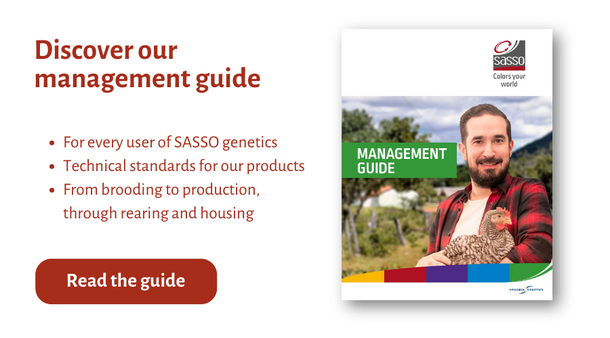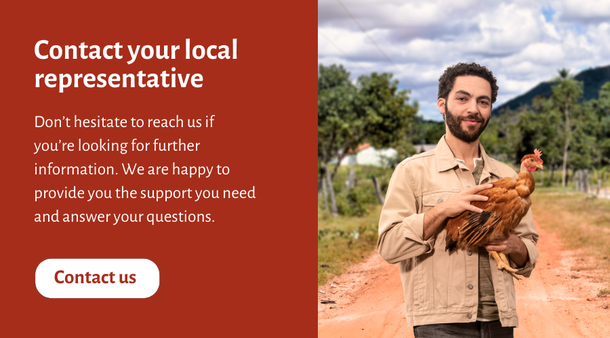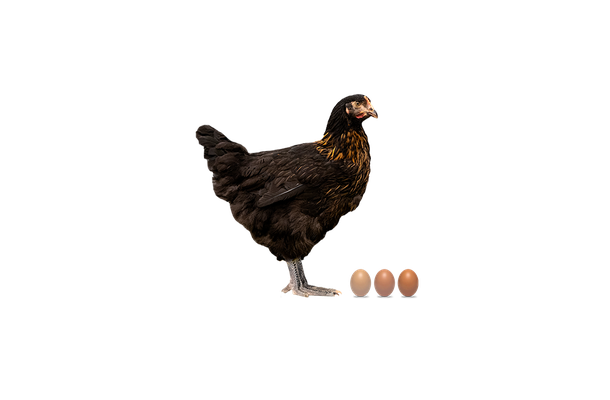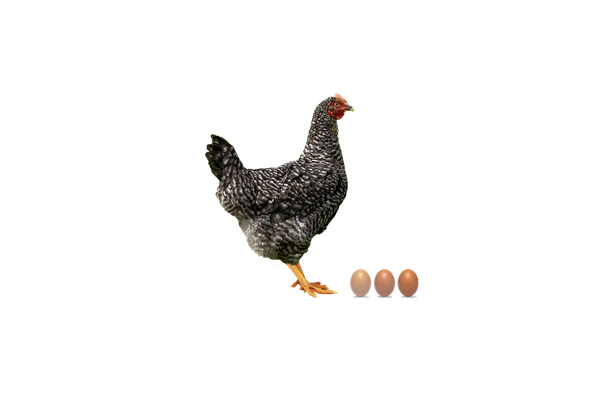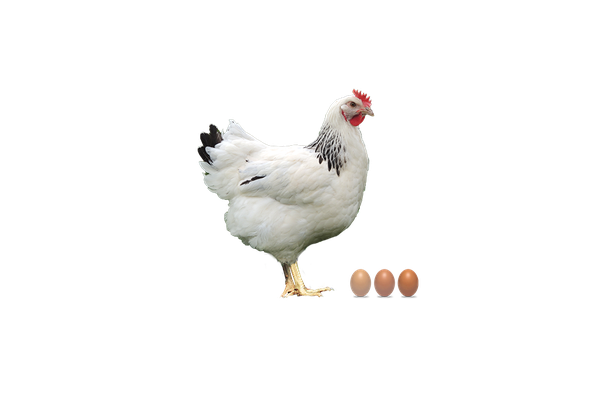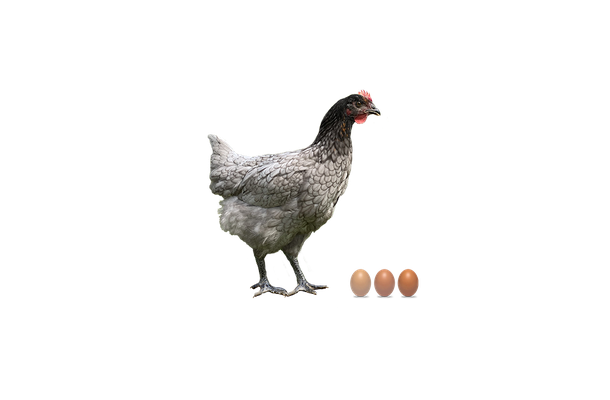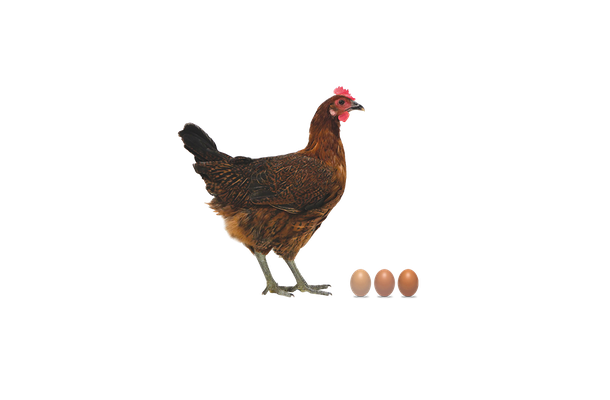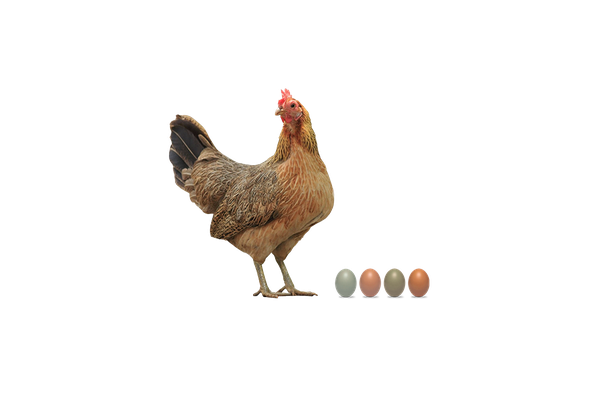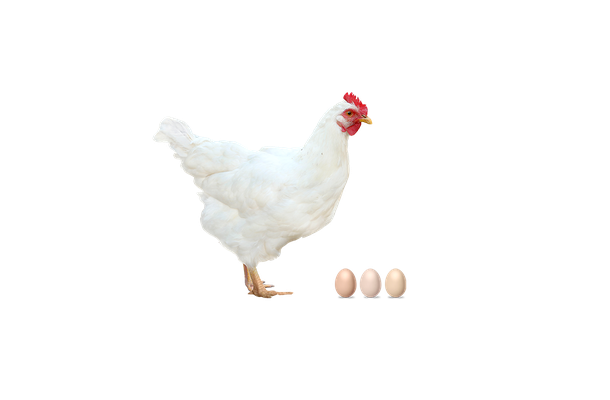Scarlet
The SASSO Scarlet features striking, red feathers and lays beautiful darker brown eggs. By raising this bird, you also benefit from good performance as the Scarlet gains weight with little management, which results in excellent meat quality. The Scarlet layer produces 318 eggs at 75 weeks, making her one of the best performing bird in our traditional layers portfolio. Another advantage is that the feathering can be used to identify the sex of the day-old chicks. The Scarlet laying hen has been specially selected to perform and be easy to manage in more challenging environments such as free range and backyard systems.
Laying period data:
- Egg production (cumulative) at 75 weeks: 318
- Body weight at 5% production: 2050 g
- Body weight at 75 weeks: 2641 g
- Average feed intake from 20 to 75 weeks: 45.5 kg
- Produced egg mass: 19.08 kg
- Average feed per egg: 143 g
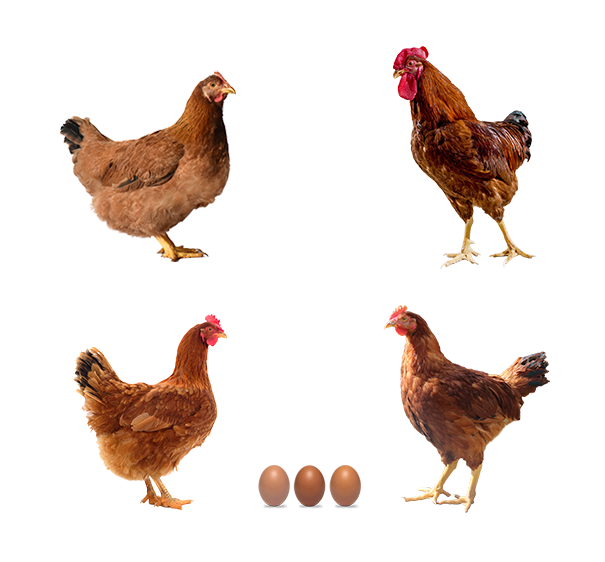
Unique benefits
Great laying performance
This brown layer produces a large number of high quality eggs.
High quality meat
The SASSO Scarlet offers top quality and tasty meat.
Thrives in all types of production
Being a rustic dual purpose chicken, the Scarlet will perform in every type of poultry farming.
Male growing performance
| Age in days | Male body weight (g) | FCR |
|---|---|---|
| 1 | ||
| 7 | 98 | |
| 14 | 160 | |
| 21 | 290 | 2.25 |
| 28 | 450 | 2.45 |
| 35 | 660 | 2.61 |
| 42 | 800 | 2.76 |
| 49 | 930 | 2.85 |
| 56 | 1090 | 2.88 |
| 63 | 1270 | 3.13 |
| 70 | 1420 | 3.26 |
| 77 | 1570 | 3.38 |
| 84 | 1720 | 3.57 |
Laying performance
|
Age in weeks |
Body weight theo. (g) |
Weekly laying theo. (%) | Cumulative egg production theo. |
Egg weight theo. (g) |
Feed consumption theo. (g) |
|---|---|---|---|---|---|
| 21 | 2170 | 32 | 2.8 | 44 | 107 |
| 27 | 2310 | 93 | 39 | 54 | 115 |
| 40 | 2426 | 88 | 118 | 60 | 117 |
| 50 | 2496 | 83 | 178 | 62 | 117 |
| 60 | 2566 | 79 | 236 | 62 | 117 |
| 75 | 2641 | 73 | 318 | 62 | 117 |
These recommendations, based on our experience, are intended to allow the expression of our strains’ genetic potential in normal operations without any responsibility on the part of SASSO. An environment, biosecurity conditions, the geographical location, or specific equipment might require adaptations that have not been taken in consideration in these general recommendations.

